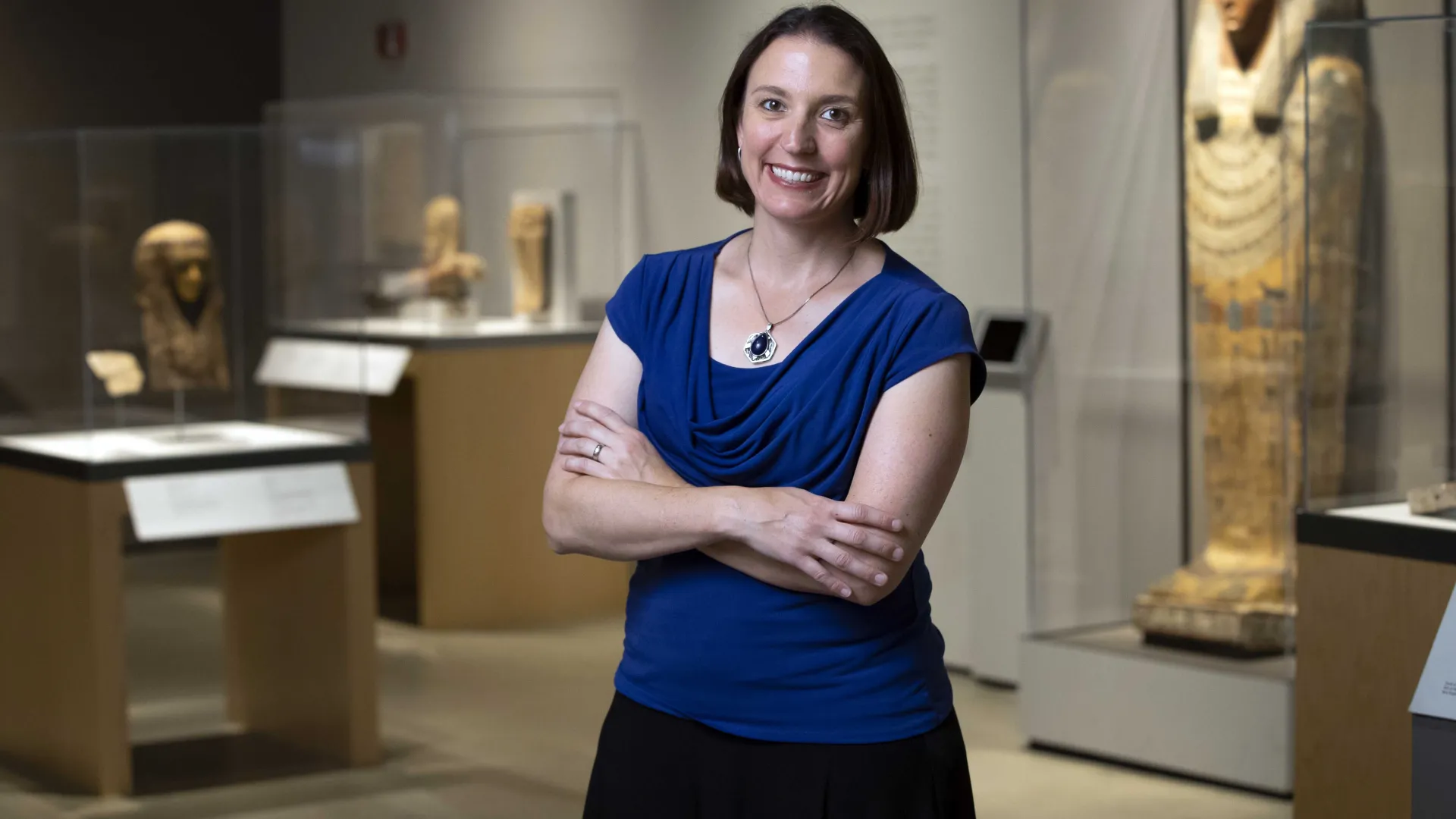Joe Gutierrez | CSUSB Office of Strategic Communication | (951) 236-4522 | joeg@csusb.edu

Join Kate Liszka, CSUSB associate professor of history and director of the Wadi el-Hudi Expedition in Egypt, who will discuss the jewelry making skill of Ancient Egyptians when she presents “Operation Amethyst: How Egyptian Kings and Queens got their Bling 4,000 years ago,” 10 a.m. Thursday, Jan. 20, online.
Also, at 1 p.m. Feb. 17, she will present “Forts, Prisons, or Rudimentary Vaults? The Three so-called ‘Fortresses’ of Pharaoh at Wadi el-Hudi and their Connection to Amethyst Mining.”
Her talks are part of the Archaeological Institute of America’s Archaeology Abridged series of 30-minute talks on different archaeological topics. Register for free online at Archaeology Abridged-Dr. Kate Liszka for the Jan. 20 event. The registration link for the Feb. 17 talk will be made available on the Archaeology Abridged series webpage later.
According to a summary of the Jan. 20 presentation: “Some of the most stunning jewelry from Ancient Egypt is made of amethyst. Its craftsmanship, opulence, and design epitomize quality in the ancient world. Yet the skill in making this jewelry started long before the cutting and buffing of the raw stone. Procuring amethyst in the Eastern Desert is fraught with many more perils and problems than Nile Valley craftsmen experienced. As the director of the Wadi el-Hudi Expedition to the Eastern Desert, Liszka leads a team that has studied the remains of these ancient desert expeditions and a team who has firsthand experience of many of the perils that the ancient explorers would have fought as well. This talk examines the extremes and dangers that thousands of Ancient Egyptians went to in order to acquire these beautiful purple stones for the Pharaoh’s jewels. By investigating the archaeology, art, and inscriptions from Wadi el-Hudi in the Egyptian Eastern Desert, we navigate through the whole process of amethyst acquisition: from finding, to mining, and surviving in the dangers of the desert.”
The Feb. 17 talk is related to the first presentation. “Acquiring amethyst in Ancient Egypt was a tricky business. But the cut raw amethyst, the amethyst mines, and the people in the desert all needed to be guarded. As part of the mining procurement process, the Egyptians created massive stone settlements and networks of guard posts in the desert. The settlements have often been compared to contemporary Egyptian forts in the Nile Valley, and the ones in the desert were supposedly built to protect from oncoming armies. Liszka directs the Wadi el-Hudi Expedition whose team has been investigating these structures in the Eastern Desert since 2014. In this talk, she will share recent archaeological work from the Wadi el-Hudi region in the Eastern Desert in order to scrutinize the location, design, and use of these so-called ‘forts’ and address the purpose of their construction. The talk will also investigate how the Egyptians protected these assets and expeditions with hundreds of soldiers, connecting roads, and watch posts strategically placed across the desert.”
Liszka is also the Benson and Pamela Harer Fellow in Egyptology at CSUSB and her research specializations include Nubians in Egypt, the Medjay, ethnicity and identity in Antiquity, multicultural Interactions in frontier regions, the Pangrave Archaeological Culture, and large-scale mining expeditions in antiquity.